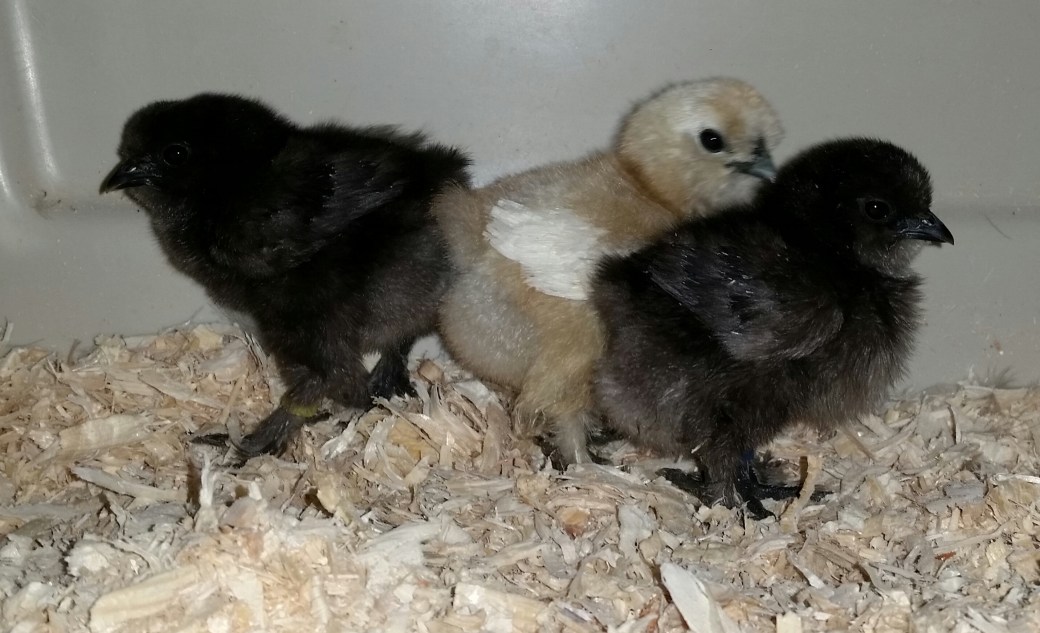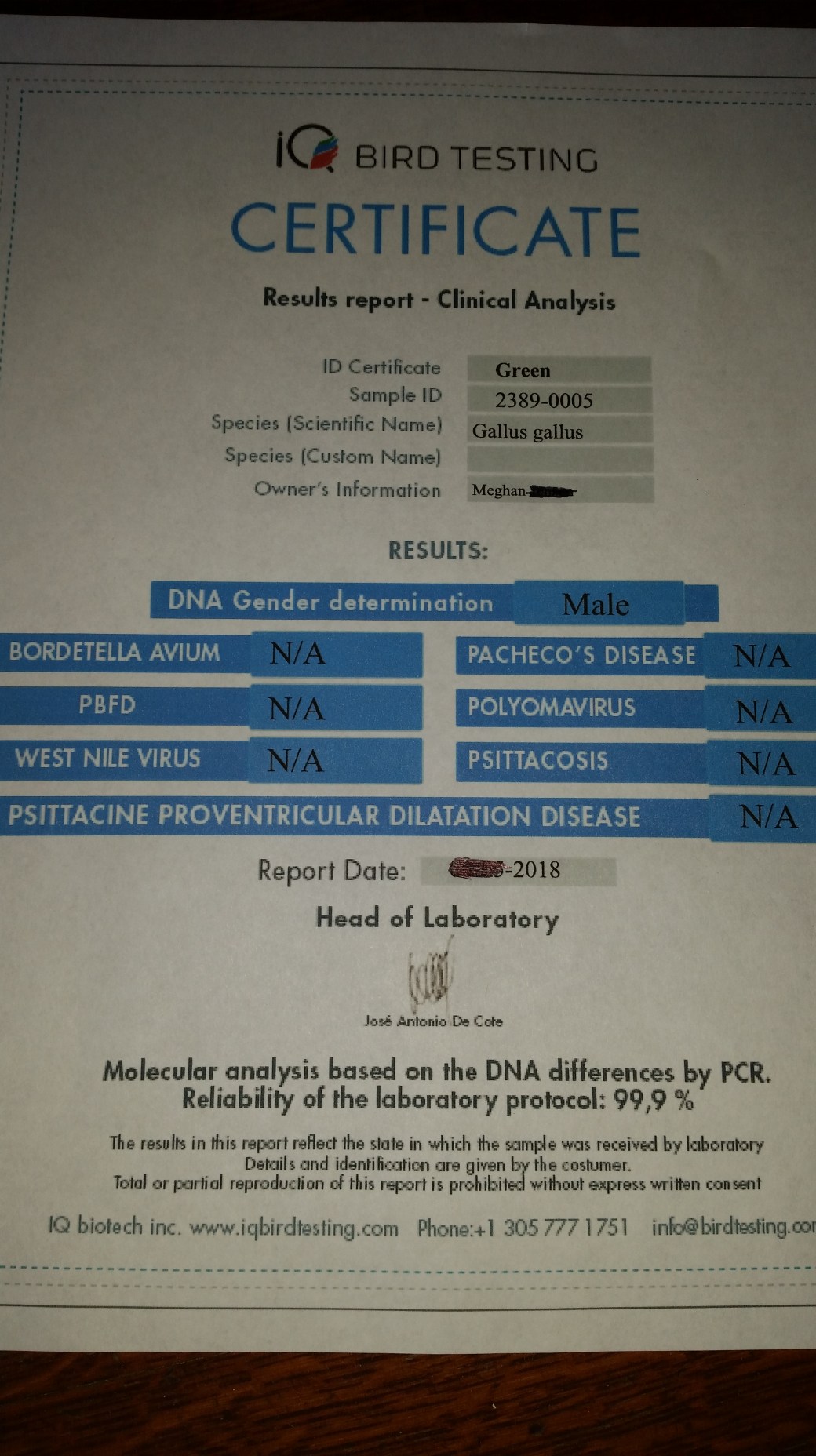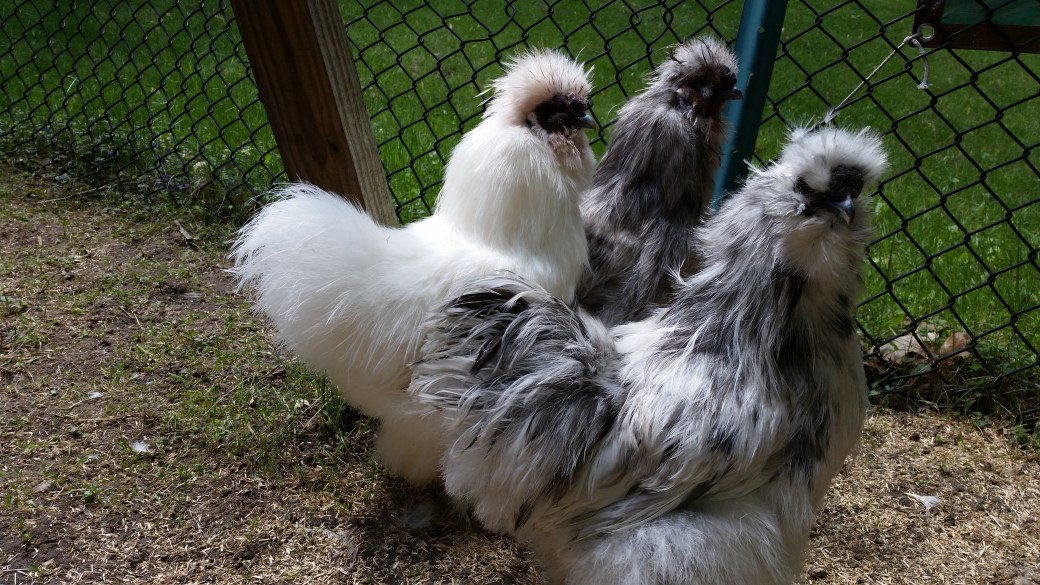 Silkie chicks are known to be very difficult to sex at a young age. An Avian DNA sex test is a scientific way to determine the gender of your baby chick before you become too emotionally attached to it knowing that if it is a rooster you will not be able to keep it depending on where you live.
Silkie chicks are known to be very difficult to sex at a young age. An Avian DNA sex test is a scientific way to determine the gender of your baby chick before you become too emotionally attached to it knowing that if it is a rooster you will not be able to keep it depending on where you live.
Many people live in cities and towns with ordinances that prohibit roosters. Their crowing makes them unpopular with city officials. It would be wonderful to know the sex of your silkie chicks within the first week of life. You could, of course, wait until it crows or lays an egg but with silkie chicks that can take many months.
Many people try and sex silkie chicks based on feather sexing, appearance or behavior. None of these methods are always reliable. Feather sexing is something genetically bred into a breed of chicken. It has to do with the length of wing feathers. Not all chicken breeds can be feather sexed. However, some believe that early feathering of the wings and tail are an indication of a female. Because silkie’s feathers are fluffy and not hooked together, it makes this kind of feather sexing especially difficult.
Luckily, determining the sex of your chick through DNA sexing is highly accurate. They claim that the reliability of the laboratory protocol is 99.9%. Many companies offer this type of DNA test and a quick online search can provide you with some reputable companies.
The first company I looked at was PollyGene through Amazon. They specialize in parrots and other home birds that can be very difficult to sex. Many of these birds are very expensive so it makes sense to spend the money in order to find out the gender. I did not see chickens listed so I wrote a question to them about whether or not they could sex baby chicks. The answer that came back was no, which kind of surprised me. I went on to look at some other companies. IQ Bird Testing specifically states that they do silkie chick sexing. They charge $11.99 per bird and you get the results back in about a week and a half. I also had a customer who tested five newborn silkie chicks that she had purchased from us and had very good things to say about the IQ Bird Testing company.
DNA bird gender determination can be performed with blood samples, feather samples and eggshell samples. Laboratory analysis will test for the Z chromosome or W chromosome in birds to determine their sex. Males will have only Z chromosomes and females will have ZW chromosome pairs. It is the females, not the males who determine the sex of the embryo.
The collection of samples is very easy to do. After placing an order with a company online, they will send you a downloadable and printable Sample Form. Print out the form as you will need it when you are collecting samples. An incorrect collection of samples may cause delay in your bird’s results or even affect the outcome due to sample DNA cross- contamination. Always be very careful in following directions exactly.
Before beginning blood collection, wash your hands thoroughly. Use a pair of clean nail clippers sanitized with alcohol. Clip the tip of any toe nail approximately 2/3 of the distance from the root of the nail. Blood will flow from the nail. Place the circle of the submission form underneath it until it absorbs a few drops. Do not touch the blood at any time as this can contaminate your sample. Allow the blood to dry completely before folding the submission form. Check that your bird is not bleeding anymore and apply an anticoagulant onto the area. The blood sample has a higher chance of finding good quality DNA than feathers or eggshell.
For feather collecting, you want to move aside the surface feathers from the lower chest area and find the smaller ones that are underneath. Pluck at least five of these smaller feathers making sure that they come with a visible quill. You could use tweezers to do the plucking. If the quill comes with some blood, allow the feathers to air dry for one hour. Never touch the quills of the feathers with your hands. Never pluck the wings. Any feathers that are molted or shed naturally can not be used for DNA testing. Tape the feathers onto the submission form and make sure the tape does not reach the quills.
The last way is to use eggshells. After the chick has hatched from the egg, place the shell sideways and allow the inner membrane to dry a minimum of 24 hours. Do not touch the inside of the eggshell. Make sure that you have the right eggshell. Use the one the chick actually hatched from. Once it dries, place the entire eggshell into a plastic bag. Pierce the bag with a needle several times to allow air flow through the bag.
Lastly, mail your form with the sample collections to the company. They will ask you the species name which in the case of chickens would be Gallus Gallus. If you are doing several different birds you will need a way to identify each bird. Colored rubber bands that are quite small work well with tiny chicks. Place a different color on the leg of each chick and then use that color for identification on your form.
In a week or so the company will send its results back to you. There will be a separate certificate for each bird tested. They will let you know if it is male or female. Of the five birds that my customer tested, three came back male and two came back female. Since the male/female ratio for chickens is 50/50 this is pretty typical. The picture at the top shows the three chicks that came back as male. Would you be able to tell that just by looking at them? I recommend DNA testing for people that can’t stand the heart break of parting with one of their pets. If you do the testing early, it is worth the cost in the long run.
For tips and tricks for raising outstanding silkies check out our Chicken Learning Center at VJPPoultry.com . VJP Poultry is an NPIP and state inspected hatchery located 30 miles north of St. Paul. We hatch out silkies all year long so we always have stock available. Like us on Facebook to get weekly updates on what we currently have for sale.
Victoria J. Peterson

 Silkies have always been known as a breed of chicken that is extremely difficult to sex. Most people will tell you that you won’t know the sex of your silkie until it either crows or lays an egg. I am going to give you some helpful hints and tricks to improve your chances of getting the sex of silkie chick that you desire.
Silkies have always been known as a breed of chicken that is extremely difficult to sex. Most people will tell you that you won’t know the sex of your silkie until it either crows or lays an egg. I am going to give you some helpful hints and tricks to improve your chances of getting the sex of silkie chick that you desire.